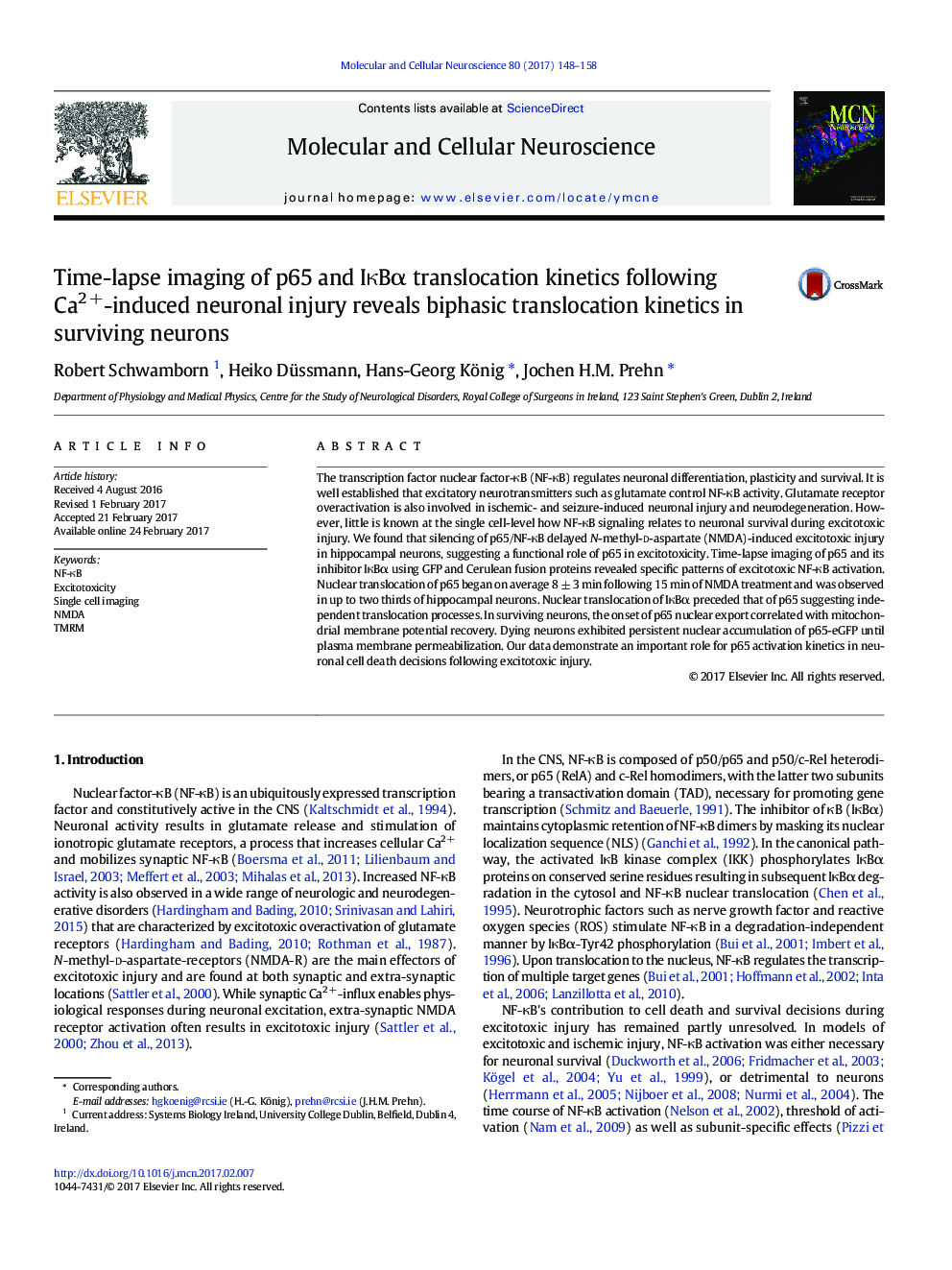| Article ID | Journal | Published Year | Pages | File Type |
|---|---|---|---|---|
| 5534388 | Molecular and Cellular Neuroscience | 2017 | 11 Pages |
•Time-lapse imaging revealed four distinct p65/NF-κB translocation patterns.•IκBα translocation is common and independent of p65 translocation.•p65 accumulated in the nucleus of dying neurons and is required for excitotoxic injury•p65 nuclear export correlates with mitochondrial membrane potential recovery.
The transcription factor nuclear factor-κB (NF-κB) regulates neuronal differentiation, plasticity and survival. It is well established that excitatory neurotransmitters such as glutamate control NF-κB activity. Glutamate receptor overactivation is also involved in ischemic- and seizure-induced neuronal injury and neurodegeneration. However, little is known at the single cell-level how NF-κB signaling relates to neuronal survival during excitotoxic injury. We found that silencing of p65/NF-κB delayed N-methyl-d-aspartate (NMDA)-induced excitotoxic injury in hippocampal neurons, suggesting a functional role of p65 in excitotoxicity. Time-lapse imaging of p65 and its inhibitor IκBα using GFP and Cerulean fusion proteins revealed specific patterns of excitotoxic NF-κB activation. Nuclear translocation of p65 began on average 8 ± 3 min following 15 min of NMDA treatment and was observed in up to two thirds of hippocampal neurons. Nuclear translocation of IκBα preceded that of p65 suggesting independent translocation processes. In surviving neurons, the onset of p65 nuclear export correlated with mitochondrial membrane potential recovery. Dying neurons exhibited persistent nuclear accumulation of p65-eGFP until plasma membrane permeabilization. Our data demonstrate an important role for p65 activation kinetics in neuronal cell death decisions following excitotoxic injury.
Graphical abstractFigure optionsDownload full-size imageDownload high-quality image (363 K)Download as PowerPoint slide
